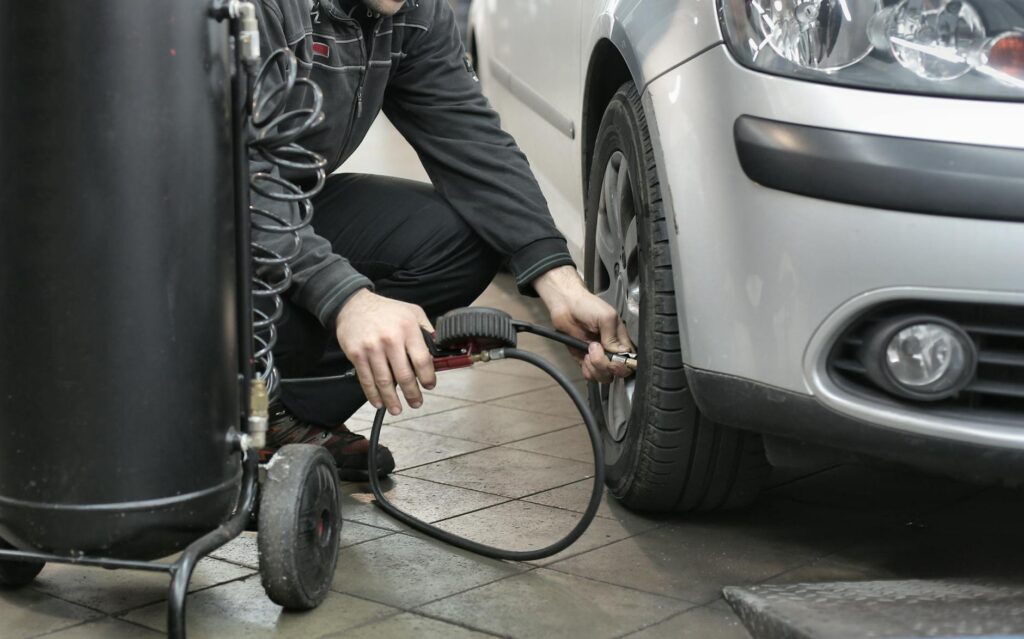Garage floors take a beating. From heavy vehicles to harsh weather, they endure a lot. Cracks are common, but they don’t have to be a permanent eyesore. This guide will walk you through how to fix those unsightly garage floor cracks, restoring your garage’s appearance and structural integrity.
Assessing the Damage
Before you start any repairs, carefully inspect the cracks. How deep are they? How long? Are they spreading? Understanding the extent of the damage helps determine the best repair method. For minor cracks, a simple sealant may suffice. Larger, more extensive cracks might require more involved repairs. 
Cleaning the Crack
Cleanliness is crucial for a lasting repair. Thoroughly clean the crack using a wire brush or pressure washer to remove any loose debris, dust, oil, or dirt. A clean surface ensures the repair material adheres properly. Consider using a degreaser for particularly stubborn stains. Learn more about cleaning garage floors.
Preparing the Crack for Repair
Once clean, widen the crack slightly using a chisel or similar tool. This allows the repair material to penetrate deeper and create a stronger bond. You want to create a slightly V-shaped groove. Don’t over-do it, a small groove is sufficient. [IMAGE_2_HERE]
Choosing the Right Repair Material
Several materials can effectively repair garage floor cracks. Epoxy is a popular choice for its strength and durability. Concrete patching compound is another great option, especially for larger cracks. For smaller cracks, a high-quality concrete sealant may be all you need. Read more about choosing the right sealant.
Applying the Repair Material
Follow the manufacturer’s instructions carefully when applying your chosen repair material. Typically, this involves mixing the components (if applicable), filling the crack, and smoothing the surface. Use a trowel or putty knife to ensure even distribution. [IMAGE_3_HERE]
Curing and Finishing
Allow the repair material to cure completely. This timeframe varies depending on the product and environmental conditions. Once cured, you may need to lightly sand the repaired area to create a smooth, level surface. Consider adding a protective sealant for extra durability and to prevent future cracking. Find a top-rated sealant here.
Preventing Future Cracks
Proactive measures can significantly reduce the risk of future cracks. Regularly seal your garage floor to protect it from moisture damage. Consider using crack filler or sealant as a preventative measure, especially in high-traffic areas. Proper drainage around your garage is also essential. Learn more about garage floor maintenance.
Additional Tips for a Professional Finish
For larger or more complex cracks, consider consulting a professional concrete repair contractor. They possess the expertise and equipment to handle more challenging situations. Remember to always wear appropriate safety gear, including gloves and eye protection, when working with repair materials. Find a local concrete contractor.
In conclusion, fixing garage floor cracks is a manageable DIY project for many homeowners. By following these steps and choosing the right materials, you can restore your garage floor’s appearance and prevent further damage. Remember that proper preparation and the right tools are key to a successful repair.
Frequently Asked Questions
What type of sealant is best for garage floors? Epoxy sealants are generally recommended for their durability and resistance to chemicals and stains.
How long does it take for a crack repair to cure? Cure times vary by product; check the manufacturer’s instructions. It’s typically 24-72 hours.
Can I drive on my garage floor after repairing a crack? Wait until the repair material is fully cured before driving on it to avoid damaging the repair.
How can I prevent cracks from forming in the future? Regular sealing and proper drainage are crucial for preventing future cracking.
What should I do if the crack is very large or deep? For extensive cracks, consult a professional concrete repair contractor.

